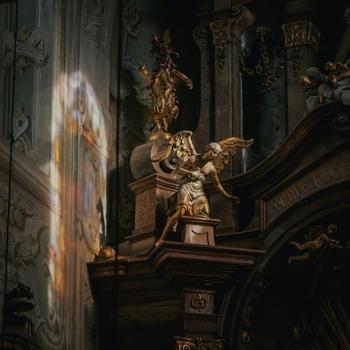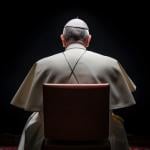
“The priest is not a priest for himself – he is a priest for you. After God, the priest is everything.” – Saint Jean Vianney.
What are we to make of such an audacious statement? Is the priest’s place so lofty that he may obtain to such claims?
In my previous expositions, I have endeavored to provide a treatment of each of the sacraments of the Catholic Church. I conclude the series with an examination of the sacrament of holy orders. While the Catholic Church recognizes seven orders; priest, deacon, sub-deacon, acolyte, lector, and porter; this exposition will focus on priests.
In the following discourse, I will attempt to describe the sacrament and how Holy Orders differ from the other sacraments. I will also review the biblical perspective on the priesthood, the history of the sacrament within the Catholic Church, and finally, the process of ordination.
SET APART
It seems only natural to a discourse on this particular sacrament to set forth a fundamental definition of a Catholic priest. Succinctly, a priest is one who mediates between man and God. This mediating principle is seen at various places throughout the Old Testament and finds its perfection in Jesus Christ, the man/God who reconciles God with man.
Saint Chrysostom says in his treatise “On the Priesthood” that the office of the priesthood is exercised on earth, but it ranks amongst heavenly things and with good reason. “For it was neither a man nor an angel nor an archangel nor any other created power, but the Paraclete [Holy Spirit] Himself that established this ministry. . . . If you consider what it is for a man clothed in flesh and blood to be able to approach that pure and blessed nature [of the angels], you will easily understand to what a dignity the grace of the Holy Ghost has raised priests.”
Holy orders refer only to clergy and certain individuals within the Church, making the sacrament unique and differentiating it from the other sacraments. Indeed, within the term “Holy Orders,” the word “Holy” means to “set apart.”
This concept of priests being “set apart” is seen in Chapter twenty-eight of Exodus. We read of Aaron and his brothers being called to the priesthood. We read too of God instructing Moses to make garments to distinguish (that is, to set apart) the priests.
This being “set apart” also meant that the Israelite priests were tasked with very specialized work. As they are today, priests were “ministers of the Lord” (Joel 2:17).
“DO THIS IN MEMORY OF ME.”
Still, it would not be until the Last Supper when Jesus ordained the apostles that anything resembling the modern priesthood can be recognized.
In Luke 22:19-20, we read of Jesus creating the New Testament priesthood. “And he took bread, gave thanks and broke it, and gave it to them, saying, ‘This is my body given for you; do this in remembrance of me.’ In the same way, after the supper he took the cup, saying, “This cup is the new covenant in my blood, which is poured out for you.”
In Greek, the verb “do” is translated as “offer” within the context of a sacrifice, so that institution narrative of the Gospels may be understood as “offer this [the Last Supper] in memory of me.” This is precisely what a priest does at the Eucharist.
It is through the sacrament of holy orders that “The mission entrusted by Christ to his apostles continues to be exercised in the Church until the end of time.” (Paragraph 1536 of the Catechism of the Catholic Church).
HISTORY OF HOLY ORDERS
As stated above, the Old Testament priesthood provides a foundation for the modern priesthood. Of particular import is Melchizedek. Melchizedek was a priest and a King who used bread and wine to bless Abram (Genesis 14:18-20). It is Melchizedek wh provides an archetype for Christ as both High priest and King.
This archetype does not go unnoticed to Saint Paul, who writes of Christ, “Thou art a priest forever after the order of Melchizedek” (Hebrews 7:17). Jesus remains the High Priest of the Catholic Church and continues to perform the office of a priest by once and for all offering Himself as a sacrifice to satisfy divine justice and by reconciling us to God.
A core principle of the priesthood is apostolic succession. In building His Church upon Peter, Jesus not only created His Church but also established the first Pope. The principle underlying apostolic succession is an uninterrupted transmission of spiritual authority from the apostles through successive popes and bishops. This succession necessarily involves the ordination of priests. Before discussing the ordination process, I would like to discuss why the priesthood is reserved for celibate men.
An avenue of attack that critics of the Catholic Church often traverse is that the priesthood preserves patriarchy to the detriment of women. Specifically, the question asked is, why is the priesthood solely the domain of men? A succinct answer is this; the Catholic Church follows the example of Christ. Just as Christ chose twelve men to be His apostles, the Catholic Church also chooses only men to be priests. More significantly, the priest acts in persona Christi (in the person of Christ). As Jesus Himself is a man, so too are His priests. As Jesus Himself is chaste, so too are His priests.
Lest one be inclined to think that the Catholic Church devalues women, we are reminded that the Church’s greatest saint is a woman, Mary, the Mother of God.
LAYING ON OF HANDS
I shall conclude my treatment of the sacrament of Holy Orders by briefly discussing the process of ordination.
The Catholic Church authorizes only a bishop to ordain a man into the ministry of deacon, priest, or bishop. As in all the sacraments, a visible aspect is meant to imply an invisible Grace.
The ordination ceremony varies according to the office of the ordinand but will include:
- The ordinand lying prostrate (to indicate that the priest is unworthy of his position and must rely solely on the Grace of God),
- The bishop laying hands upon the man (an invocation of the Holy Spirit), and
- Finally, the ordinand will receive a stole and a chasuble (meant to symbolize the authority and responsibility to serve Christ).
I hope this article has, however inadequately, provided a glimpse into the beauty and significance of the Catholic priesthood.












